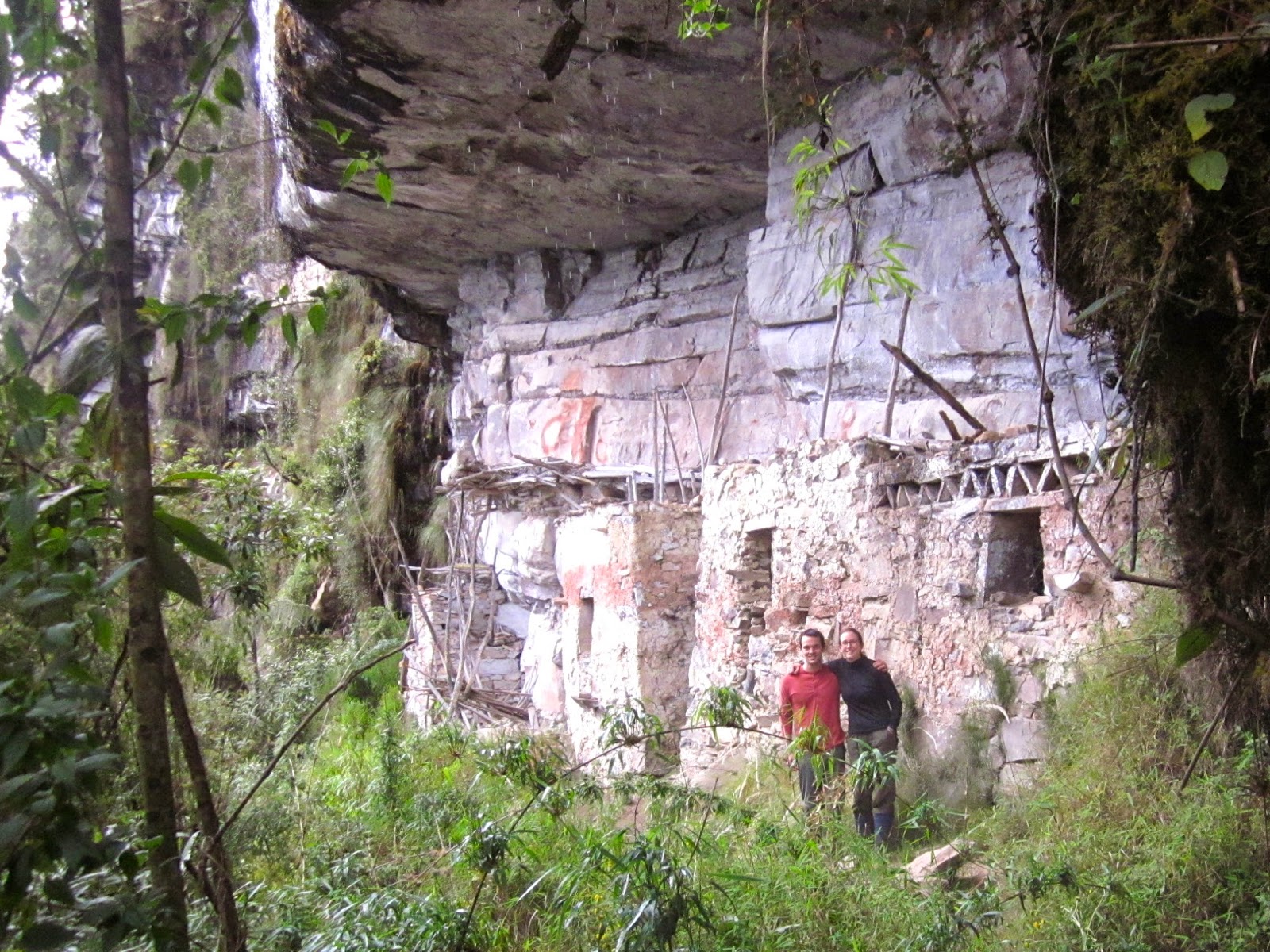After a long bus ride where each curve of the road brought us inches away from vertical precipices, we arrived in Leymebamba, the rural town that serves as the trek's departure point. Our volunteer friend Andy, who lives in Leymebamba, introduced us to our guide, Clemente, and we spent the next few hours visiting the numerous spots in town necessary for pre-trek preparations. There was the national park entrance fee paid at one house, use of the bunkhouse and stables at another, then the rowboat rental fee, pairs of knee-high rubber mud boots, food shopping, and finally a visit to Clemente's house so we'd know where to meet him in the morning. This ramble about town, rather than a one-time lump payment to a single tour agency, was definitely part of the charm of the journey.
Early the next morning, we set off: Clemente, the pack-horse, and Chris and I alternating between walking and riding a second horse. We walked for ten solid hours through a landscape that slowly but constantly transformed: farmland, meadows, dry forest, cloud forest, rock fields, barren high mountain slopes, pampas, humid and jungly riverland, etc. etc. It was incredibly beautiful, and undisturbed by human touch except for the occasional cowherd shelter. The mud boots turned out to be worth every inch of rubber (despite the horrible blisters they caused) - at points we sank in thick mud or water up to our knees! And this was during the dry season, so I couldn't imagine walking the same route during the rains. Just as dusk was beginning to gather, we arrived at the farmhouse where we'd be staying and collapsed into sleep soon after.
On the second day we walked ten minutes to the ridge overlooking the laguna that gives the trek its name. There are actually no longer condors living in the area, but the name stuck. The lake itself is a starkly beautiful deep black, taking on such a dark color because of its extreme depth, surrounded entirely by dense green cloud forest. All the moisture in the air and soil gives the environment the humid and wet feel of a jungle, despite being at high elevation. We uncovered our rowboat and paddled across the still black water, which was a perfect mirror reflection of the surrounding mountains. On the other side, Clemente set some fishing lines, and then we embarked on a 40-minute hand-over-hand scramble up the side of the overgrown cliff. Our destination were the six chullpas (mausoleums) tucked into the rock face high above the lake. Built by the Chachapoyas people to house their mummified dead, the stone structures are very well-preserved, and the 200+ mummies found there remain in the museum in Leymebamba. The afternoon finished out with some tranquil hours of fishing, and with just simple lines and flies we caught enough trout for dinner!
 |
| The chullpas are nestled into the side of this mountain |
Day three was another ten-hour stroll, reversing our course back into Leymebamba. We arrived exhausted and blistered, but both feeling that it was one of our favorite adventures in Peru.









No hay comentarios:
Publicar un comentario